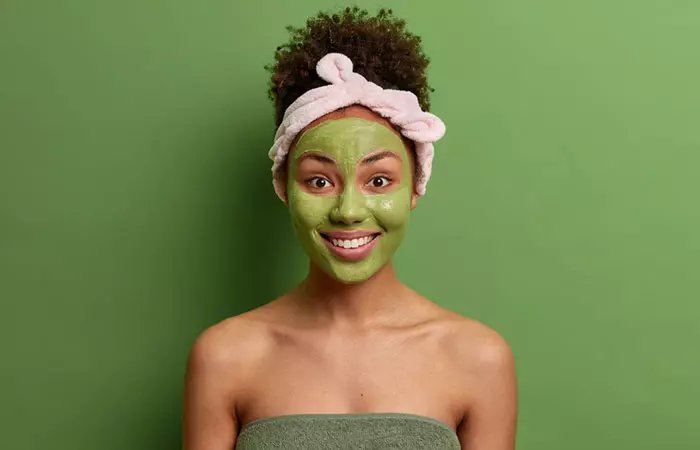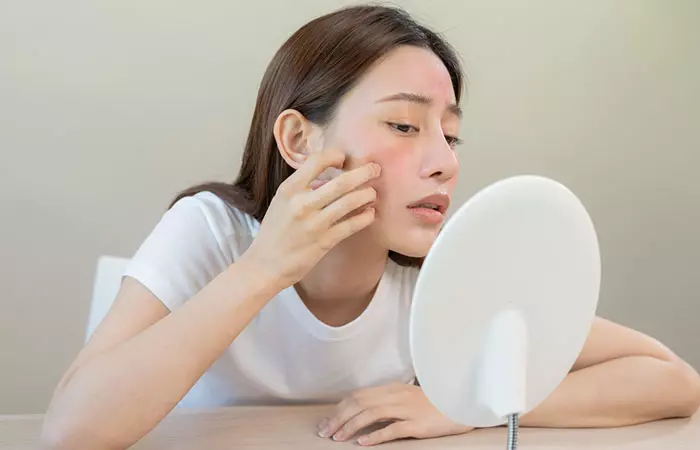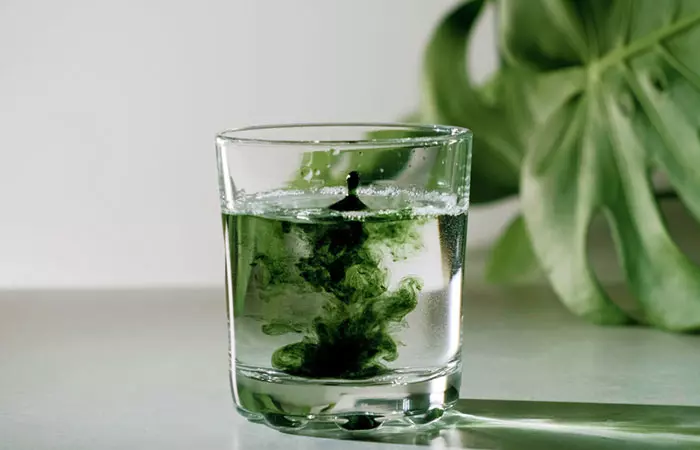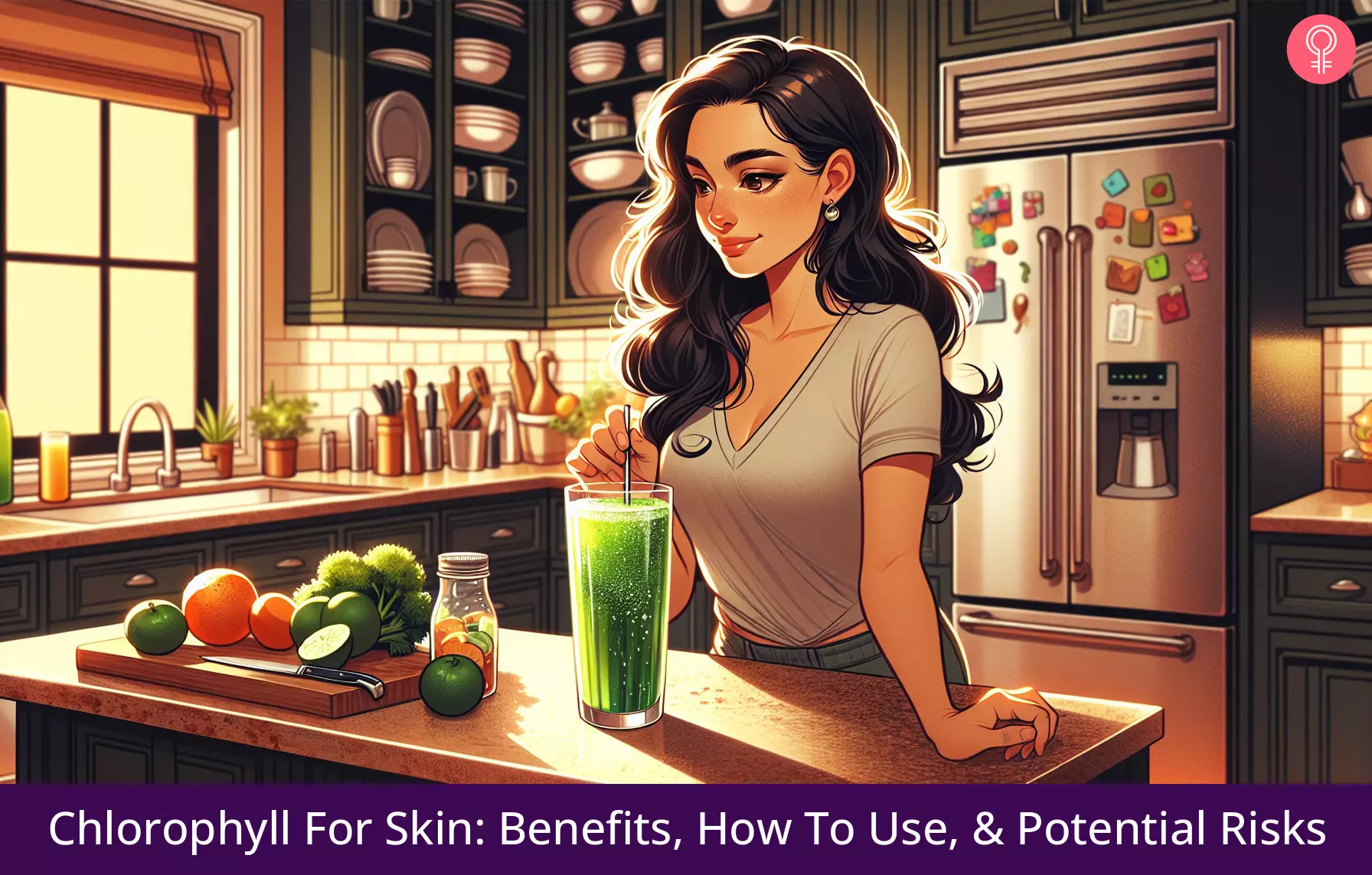How Liquid Chlorophyll Combats Acne: A Science-Backed Perspective
Chlorophyll, a green plant pigment responsible for photosynthesis, is also a potent phytonutrient that has become well-known in natural skincare as it supports healthy skin and delays early signs of aging. It is a popular ingredient in plant-based skincare and the green beauty movement, along with other plant extracts recognized for their skin health-promoting activities. How Often? Chlorophyll can be taken thrice a day, though its use varies according to the individual. Caution Chlorophyll can cause photosensitivity, itching, or burning sensation in a few individuals. It can also lead to diarrhea or nausea if consumed in excess quantities.
Chlorophyll acts as an effective anti-inflammatory, anti-bacterial, and antioxidant agent, making it useful for treating various kinds of skin inflammation (1). Another study claims that chlorophyll, when used in combination with photodynamic therapy, can reduce acne counts, acne severity grades, and sebum levels (with minimal side effects) (2). Note: Apart from the studies mentioned above, little research has been done to prove chlorophyll’s ability to treat acne directly. Let us now understand the advantages of liquid chlorophyll for skin.
Can Chlorophyll Water Actually Help Your Skin?
Supplementing your skin with chlorophyll water cannot directly treat acne. However, when you consume it, the chlorophyll is believed to attract sunlight to your skin, helping curb the eruptions. This concept is also known as photodynamic therapy. Here is how the photodynamic therapy process works: Step 1: A photosensitizing chemical substance is added to the skin. Step 2: The skin is then exposed to blue/red light. Step 3: This light kills the acne-forming bacteria. Note: Consuming chlorophyll can make your skin more sensitive to sunlight and may cause sun rashes/sunburn. Also, there is not enough research to suggest that chlorophyll water can actually treat your skin woes. Hence, consult your doctor before using chlorophyll.
What Are The Benefits Of Chlorophyll For Skin Health?
1. Helps Improve Skin Appearance
Participants with mild to moderate acne and large pores witnessed an improvement in their overall skin appearance after applying a chlorophyll-based cream (3). Since acne comprises dead skin cells, bacteria, and oil, chlorophyll doubles up as a powerful anti-acne and anti-inflammatory agent. Chlorophyll may take some time to show visible results. A blogger shared her experience of consistently using chlorophyll on her cousin’s recommendation. She said, “Since taking chlorophyll regularly for a week and a half, I’ve noticed very little improvement in my acne. To be fair, this is the time of the month in which the acne is pretty calm anyways, but I don’t notice a marked change – a hippy glow, if you will (i).” She further added that she does feel like it is clearing out the toxins in her body because she feels better internally.
2. May Help Reduce Skin Aging
A skin gel containing sodium copper chlorophyllin complex showed significant improvements in certain aging parameters (4).
3. May Help With Wound Healing
Chlorophyll possesses anti-inflammatory and anti-microbial properties (5). These properties may help with wound healing, though more research is warranted in this regard.
4. May Act As A Natural Cleansing Agent
The antioxidant properties of chlorophyll may allow it to cleanse and purify your blood and skin. Some believe these properties may help reduce fine lines, dark spots, and wrinkles that occur due to oxidization and sun damage. However, more information is warranted in this regard. It is believed that the magnesium in chlorophyll may reduce skin redness and itching. But limited information is available in this regard.
5. May Help In Skin Brightening
Chlorophyll pigments may act as a shield from UV radiation (6). Therefore, it may help prevent skin damage caused by sun exposure, thus reducing skin blemishes and pigmentation issues. In a study conducted on the efficacy of chlorophyllin complex in treating photodamaged skin, the participants experienced significant improvement in their skin condition. It is, therefore, considered to be an effective treatment for mild to moderate photodamaged skin and dark patches on the skin (7). Thus, it may help brighten the skin.
6. May Help Treat Acne Scars
A study found that chlorophyll reduced the appearance of acne in 24 subjects (2). However, there is not enough scientific evidence to prove whether it helps treat acne scars. This graph from a 2022 study published in Antioxidants shows the antioxidant capacity of phyllobilins (PBs), a group of chlorophyll-derived bioactive compounds, by assessing the oxygen radical absorbance capacity (ORAC) assay, which determines a compound’s ability to inhibit peroxyl-radical-induced fluorescein oxidation.
Antioxidant Capacity Of Chlorophyll-Derived Products
These are the few major chlorophyll benefits for skin health. In the following section, we will see how you can make liquid chlorophyll.
DIY Recipe To Make Liquid Chlorophyll
Ingredients
80 grams of picked parsley leaves or one cup of raw spinach (which contains about 24 mg of chlorophyll) 6 cups of water
The Method
Wash and dry the parsley leaves properly. Ensure all the dirt is washed away. Blend the leaves in a blender with some water. You should get a bright green liquid in the end. Strain the liquid through a fine sieve and transfer it into a saucepan. Keep the stove on low heat and stir slowly and constantly till you notice small green particles rising to the surface. Pour this mixture into a container with ice cubes and store it in the fridge. Once cold, pour the mixture through a muslin-lined sieve. Discard the water. You should get about two tablespoons of chlorophyll. Scrape the remaining green paste from the muslin and store it in an airtight container in the fridge. You can use this mixture for about a week. Do not store it beyond a week.
You can add this liquid chlorophyll to your juice. You may also have one teaspoon of liquid chlorophyll as it is. Ensure you consult your doctor first if you have any concerns.
DIY Face Mask Recipe: Antioxidant Green Moisture Mask
Here is another antioxidant-rich moisturizing mask with chlorophyll that you can use to give your skin that natural glow. Ingredients
1 tablespoon organic avocado 1 probiotic capsule (the contents) 1 tablespoon organic olive oil 1 tablespoon raw honey ½ a teaspoon organic matcha ½ a teaspoon chlorophyll
Method
Mix all the ingredients. Apply the mask and massage gently into the skin. Let it sit for about 15-30 mins. Wash it off in the shower.
Though chlorophyll has certain benefits, it may pose some risks too. Let us explore the same in the following section.
What Are The Risks Of Using Chlorophyll On Skin?
Consuming too much chlorophyll can have adverse effects on your skin:
Your skin may become more sensitive to the sun because of chlorophyll’s photosynthesizing effects Photosensitive rashes with blisters Stained teeth Gastrointestinal problems and diarrhea, often accompanied with chlorophyll supplements Skin itching or burning Discolored stool (green, yellow, or black)
Note: Pregnant and lactating women should not consume chlorophyll in any form. Chlorophyll water also tested unhealthy in mice. It was harmful to the embryos (8). Hence, please consult with your doctor prior to consuming chlorophyll water, having it as a supplement, or using it in any other form. In the next section, we will deep-dive to understand the different ways in which you can use this green, natural pigment and make the most of its proposed benefits.
What Are The Different Ways To Use Chlorophyll?
There are numerous ways to use chlorophyll – be it applying topically or consuming orally as a liquid or a supplement. Chlorophyll comes in varied forms such as tablets, ointments, and sprays. The recommended dosage of chlorophyllin supplements seems to range between 100 and 300 milligrams (mg) per day over three divided doses. Please consult your doctor for more information regarding the dosage, as it may vary among individuals. Additionally, chlorophyll is also found naturally in foods such as spinach, wheatgrass, asparagus, green cabbage, arugula, leeks, green beans, peas, broccoli, marine algae (like seaweed), and matcha tea. You can also easily add chlorophyll powder to juices, smoothies, sauces, and salads and make it an integral part of your daily wellness routine. What does liquid chlorophyll do for your skin? Check out the infographic below to learn more about the health benefits of chlorophyll.Illustration: StyleCraze Design Team However, consuming too much chlorophyll can also have side effects like itching, burning, and photosensitivity. Try adding this to your skin care routine for a more natural and organic skin care approach. Liquid chlorophyll acts as an antioxidant and helps fights numerous skincare issues such as acne and damaged skin. It also may help heal wounds. Does liquid chlorophyll make your skin clear? Liquid chlorophyll helps ward off free radicals that occur when the skin is breaking down or is damaged. It is especially useful in treating inflammatory acne. It helps make your skin clear. Does chlorophyll increase collagen? Yes. Chlorophyll promotes type 1 procollagen synthesis and prevents collagen degradation. As a result, it helps keep the skin youthful, firm, and elastic and prevents wrinkles (9). Can you apply chlorophyll directly to the face? Yes, chlorophyll can be applied directly to the face. It has anti-inflammatory properties and may help soothe the skin and reduce acne.
Illustration: Chlorophyll For Skin: Benefits How To Use & Potential Risks
Check out the video below to see why chlorophyll water isn’t the answer to clear skin! Watch to find out why this TikTok skin care fails and won’t give you the results you want.












